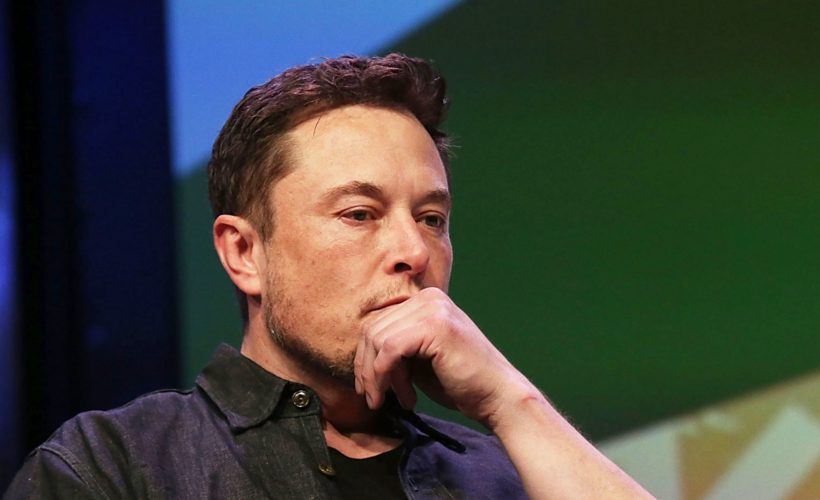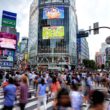After a tumultuous year in stormy seas, Tesla is making progress toward a safe harbor. In a report to investors today, the automaker revealed that it built more than 2,000 Model 3 sedans for three consecutive weeks in April, an encouraging number for a company that has lagged badly on its production targets for this all-important vehicle. Stocks initially rose in after market trading, then dropped when CEO Elon Musk called analysts’ questions about capital requirements and sales figures “boring bonehead questions” and “so dry, they’re killing me”—and declined to answer.1
Trouble is an old friend to Musk’s young automaker, which over a 15-year existence has confronted one near-disaster (flirtations with bankruptcy, high-profile crashes, lawsuits, federal investigations, grievous delays) after another. Yet somehow, Tesla wriggles out of trouble and rolls out a fantastic product. The fans cheer, the stock goes up, the short-sellers are foiled again.
This report foreshadows another victory lap: “If we execute according to our plans, we will at least achieve positive net income excluding non-cash stock based compensation in Q3 and Q4,” it states. That’s right people: Tesla will be profitable by the fall, if it sticks to its plan. Something it’s not terribly good at.
This time around, though, the situation is extra precarious, because the stakes are so much higher. The Model 3 isn’t just one more car. It’s the product meant to take Tesla from industry gadfly to mass market maven. The $35,000 five-seater would mark the culmination of a 15-year strategic play that started with the proof-of-concept Roadster in 2008. It would bring EVs to the masses and profits to long-patient investors, and set Tesla up to build the next three vehicles it has promised: a semi-truck, a revival of the Roadster, and the Model Y, a small SUV. (If you’re curious about the nomenclature, put them in this order: S3XY.)
It was supposed to be hard. Even electric cars (which are mechanically simple compared to those with internal combustion engines) consist of thousands of parts. Making 5,000 vehicles a week—one every two minutes—requires exquisite control of global supply chains, stable and productive relations with workers, and an efficient, reliable assembly process. Tesla has enough control over these things to build 100,000 Model S and X cars a year, but adding the Model 3 and quintupling output within a year (as Musk promised) called for a whole new assembly line and ratcheted up the degree of difficulty. “Welcome to production hell,” Musk half-joked in July 2017, when he kicked off Model 3 sales.
Even by Tesla standards (the Model X arrived two years late), this is a tight spot. Musk initially promised he’d be making 5,000 Model 3s a week by July 2017. Then he pushed it to the end of 2017. Then to the end of April, then to the end of July. With this report, Tesla adds some wiggle room: “We continue to target Model 3 production of approximately 5,000 per week in about two months.”
This ongoing failure to produce lots of Model 3s—and do it profitably—has taken a toll. The automaker wrapped 2017 with its largest quarterly loss ever, $675 million According to Bloomberg, it goes through so much cash—more than $6,500 a minute—it could run out this year. Squeezed by various bottlenecks, including inadequate battery output from its Nevada “Gigafactory” and problems with suppliers, at one point last year Tesla was reportedly building cars largely by hand.
Lately, Musk has taken direct control over Model 3 production, and he froze everything for several days to rejigger operations and scale back Tesla’s reliance on assembly robots. On today’s investor call, he described a robot that used a machine vision system to place a fiberglass mat over the car’s battery pack. “Flufferbot” would fail to grasp the mat, or put it in the wrong place, gumming up the works. “Machines are not good at picking up pieces of fluff,” Musk said. “Hands are way better at doing that.” But then, when Tesla tested a car without that mat, it found the no noticeable difference in cabin noise. So it ditched the whole thing. Tesla is planning another such stoppage later in the quarter to make further changes.
But perhaps Tesla’s outlook is less rosy than the quarter’s solid numbers indicate. The investor call got testy when Toni Sacconaghi of Sanford C. Bernstein asked whether Tesla could indeed reach a gross margin target of 25 percent on the Model 3, then followed with a question about the automaker’s projected capital requirements. “Next,” Musk said. “Boring bonehead questions are not cool.” As the CEO moved on to questions he found more interesting (about Porsche’s supercharger stations and self-driving cars), Tesla’s stock price dropped, ending up down 4.55 percent in after hours trading.
Model 3 production is the big (now apparently contained) fire, but hardly the only one. In April, Tesla publicly sparred with the National Transportation Safety Board, which is investigating the death of a Model X driver who crashed into a highway barrier while Autopilot was controlling the car. A few weeks before that, Tesla recalled 123,000 Model S sedans built before April 2016, over concerns that bolts holding the power steering system together might fail. Its solar panel business, which it took on when it acquired SolarCity in 2016, is struggling.
Tesla is also being sued by former factory workers who allege a pattern of racial prejudice. A report by the Center for Investigative Reporting found the automaker failed to record some worker injuries, as required by law. (Tesla called that report “an ideologically motivated attack by an extremist organization working directly with union supporters to create a calculated disinformation campaign against Tesla.”) And just today, hydrogen fuel cell truck company Nikola sued Tesla for more than $2 billion, claiming Musk’s outfit copied the design of its vehicle. No surprise, then, that the company’s ever-fluctuating stock has trended downward over the past year.
On their own, none of these issues are company killers. But they are all happening now. And so Tesla will lean on the good news. “The thing I’m most excited about is the rapid increase in output,” Musk told investors. The prospect of profitability isn’t too bad, either.
1Story updated at 22:00 EST to include further details from the afternoon’s investor call.
Tesla’s Toil and Troubles
- Buying a Tesla? Don’t count on that $7,500 tax credit
- Tesla’s wild fight with the feds investigating its Autopilot death
- The worst thing about Tesla’s 123,000-car recall? Crummy timing
Source:WIRED











